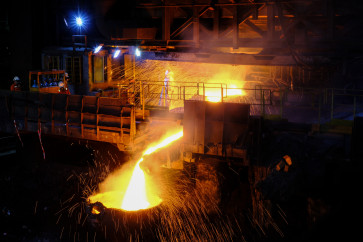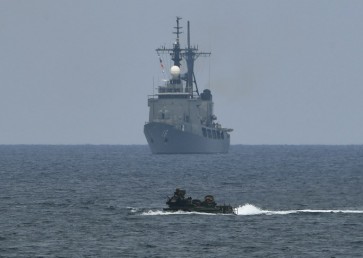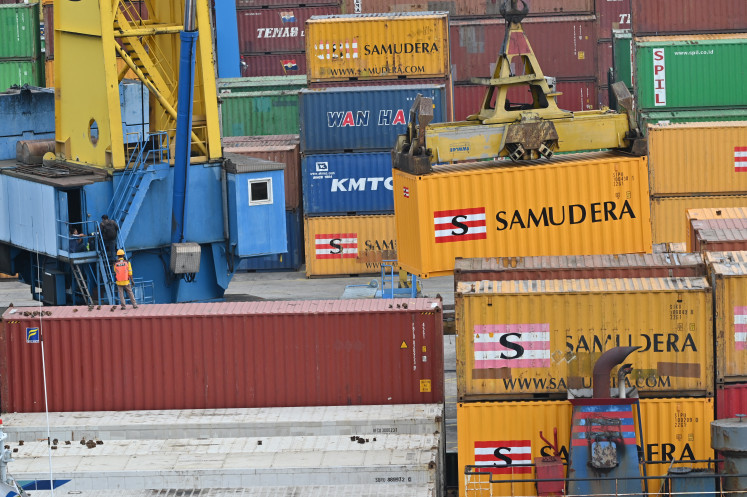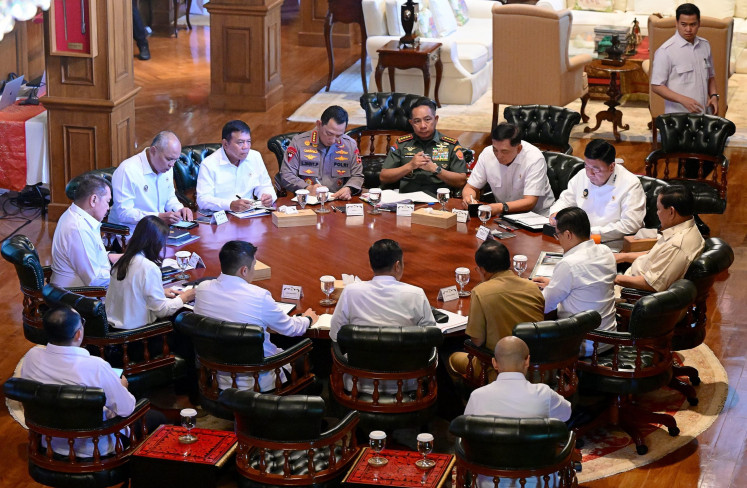Popular Reads
Top Results
Can't find what you're looking for?
View all search resultsPopular Reads
Top Results
Can't find what you're looking for?
View all search resultsGovt urged to export more LNG to stave off oversupply
Indonesia might have to review its curtailment on liquefied natural gas (LNG) exports, as domestic demand, especially for power generation, may not be as high as expected, leaving a huge amount of supply untouched
Change text size
Gift Premium Articles
to Anyone
I
ndonesia might have to review its curtailment on liquefied natural gas (LNG) exports, as domestic demand, especially for power generation, may not be as high as expected, leaving a huge amount of supply untouched.
Global consulting firm Wood Mackenzie has estimated that the country’s LNG production will fall by around 4 percent to 18.5 million tons this year. Of that figure, 9 million tons will come from the Bontang plant in East Kalimantan, while another 7 million tons and 2.5 million tons, respectively, will derive from the Tangguh plant in West Papua and the Donggi-Senoro plant in Central Sulawesi.
It estimated that importers from East Asia, including Japan, South Korea and Taiwan, have committed to buying 12.5 million tons of LNG from Indonesia, while the domestic market will absorb about 2.8 million tons.
Consequently, there would be a surplus of around 3 million tons this year, which was too much to sell on the spot market, said Edi Saputra, senior analyst for gas and power at Wood Mackenzie Asia Pacific.
“[Unless the situation changes], Indonesia is likely to see another LNG surplus next year. Therefore, the government should be more flexible in opening the LNG export tap,” he recently said.
The government decided to let gas sales and purchase agreements with some of its Japanese and South Korean counterparts expire at the end of last year in order to allocate more supply to the domestic market. Under the ended contracts, Indonesia sold around 5.5 million tons of LNG annually.
To anticipate soaring local demand, state-owned energy giant Pertamina has signed a 20-year deal to import 1.52 million tons of LNG per year from United States-based Corpus Christi Liquefaction starting in 2019, as well as 600,000 tons of LNG each year from Australian energy firm Woodside over the 2022-2034 period.
In addition, it has also inked a 15-year deal to import LNG from France’s Total S A starting in 2020. The import volume will gradually increase from 400,000 tons to 1 million tons each year during the designated period.
However, Edi said domestic demand had dropped to only 2.4 million tons last year from 2.8 million tons in 2016, partly driven by low electricity sales because of the government’s move to gradually remove 18.85 million people from its subsidized electricity program.
Demand might pick up to 2.8 million tons this year following the completion of several gas-fueled power plants in the country, but that would still not be enough to match national production, he added.
“Taking into account the LNG import contracts signed by Pertamina and the relatively low domestic demand, Indonesia will only need to import LNG starting in 2025,” Edi said.
As a result, Edi suggested that it would be better for the government to jack up the volume of LNG sold overseas to maintain the supply-demand balance. In addition to traditional buyers like Japan, South Korea and Taiwan, Indonesia might also be able to tap into China, which saw a booming LNG market recently, he further said.
Danny Praditya, the commerce director at state-owned gas distributor PT Perusahaan Gas Negara (PGN), also projected that local gas demand would be lower than initially expected, particularly with the government’s latest move to provide discounted prices for coal used by state-owned electricity firm PLN to generate power.
He said, through such a policy, the company would certainly prefer using more coal in power generation to cut its electricity supply cost.
“We hope gas demand from the industrial sector can increase by 3 to 5 percent this year,” Danny said. “But, the projected demand from the power generation sector might be corrected following the introduction of the new coal pricing policy.”
Upstream Oil and Gas Regulatory Special Task Force (SKKMigas) head Amien Sunaryadi previously said it was difficult to push up the domestic use of LNG, as Indonesia only had regasification terminals in three locations — Aceh, Lampung and Bali.










